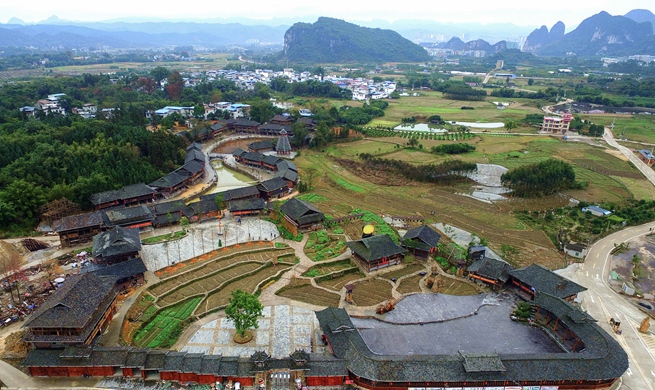by Xinhua writer Liu Yanan
NEW YORK, Jan. 23 (Xinhua) -- China's economy enjoys multiple sources of growth potentials and resilience, and its structural change brings about optimism on the country's ability to tide through difficulties, according to a senior investment advisor with UBS Wealth Management.
Growth potentials and resilience of the Chinese economy stem from a mixed combination of effective fiscal and monetary policies, and the fact that the economy has become more consumption-oriented and less export-dependent, Jorge O. Mariscal, Emerging Markets Chief Investment Officer at UBS Wealth Management, said on Tuesday.
The ongoing transformation of the Chinese economy relies less on traditional exports and more on an increasing number of technological breakthroughs such as 5G and industrial internet, Mariscal said in an email interview with Xinhua.
China's supply side reform generates the potential momentum of a new model of growth, which fosters innovation and less bureaucracy, Mariscal added.
"The above structural change makes us optimistic about China's ability to navigate the current difficult juncture," said Mariscal.
Mariscal said he expected that the Chinese economy would grow 6.1 percent in 2019 amid some mixed trends.
China's economy, the world's second largest, grew 6.6 percent year on year to reach 90.0309 trillion yuan (about 13.28 trillion U.S. dollars) in 2018, above the official target of around 6.5 percent, according to data issued by the National Bureau of Statistics (NBS) on Monday.
China also would have higher debt-to-GDP ratio in 2019 due to the slowdown in economic expansion and the easing of fiscal policies, which will likely lead to a rebound of the property sector, liquidity level, and ideally consumption to investment level in 2019, according to Mariscal.
Chinese economy underwent a meaningful slowdown caused by deleveraging in 2018, compounded by negative investment and consumer sentiment due to trade tensions with the United States and a slow and gradual policy response, said Mariscal.
Mariscal also expected more fiscal policies and further expansionary monetary policies from China as China's central bank has already lowered reserve requirement ratio by 100 basis points so far 2019 with 83 billion U.S. dollars injected to the banking system.
China is still likely to report weak economic indicators in the first quarter of 2019 as the transmission of policies into real economy takes time and the effects of supportive policies are likely to be felt after the first quarter, said Mariscal.
Chinese investment growth has rebounded since October 2018 due to high infrastructure investment from local governments, but it remains to be seen whether it is sufficient to stabilize growth in 2019, according to Mariscal.
A stable economic performance in China will of course promote the stability of global economy as China makes up about 15 percent of global GDP, said Mariscal.
Whether China could manage to mitigate the downside risks by setting forth a series of counter-cyclical policies is crucial to the global economy, especially amid the uncertainties of trade tension between the United States and China.
The impacts from tariffs in 2018 were not as bad as expected based on the most recent statistics of Chinese trade balances, according to Mariscal.
It is estimated that China contributed to nearly 30 percent of the world's economic growth and remained the largest contributor to global growth in 2018 as China's economic growth entered a new normal of slower economic growth.













